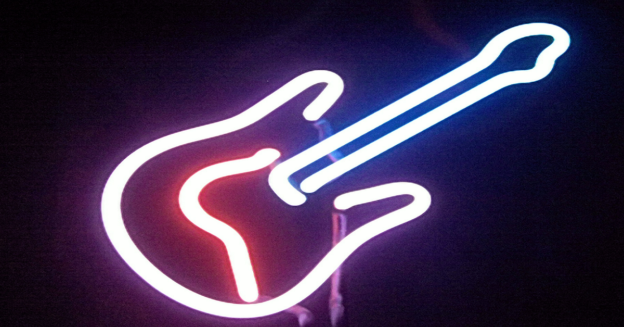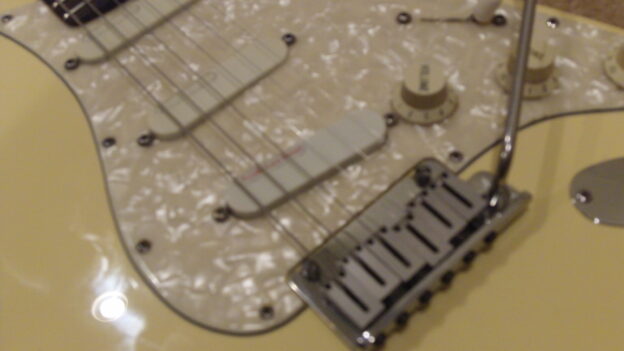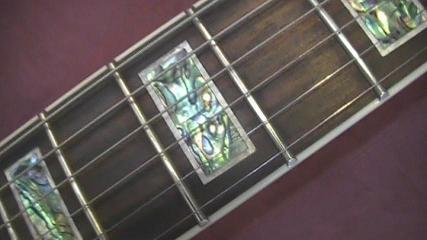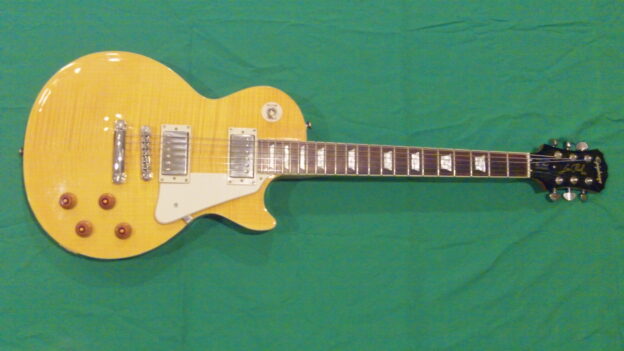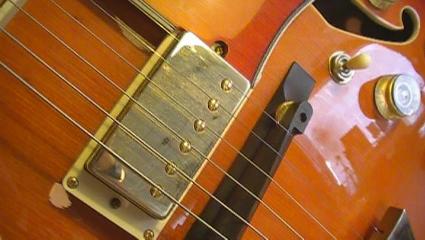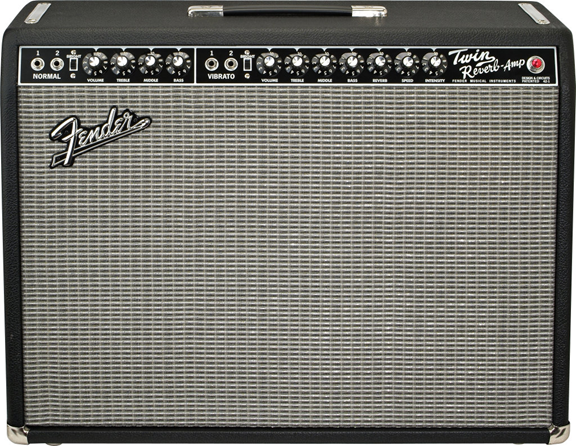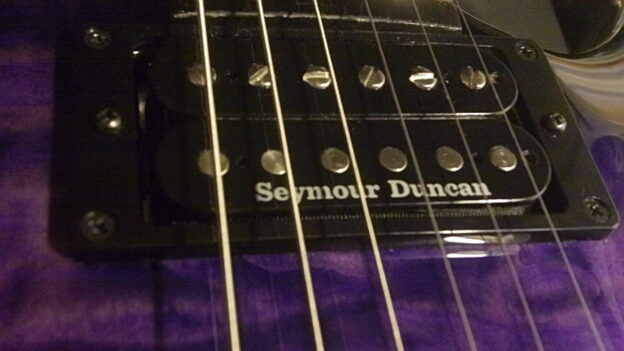By Chad Crawford, PMI Guitar Instructor
If you have been learning guitar for any length of time then you know that musical mastery is a journey rather than a destination. As with any significant endeavor, the process involves working on individual elements of knowledge and skill and then assembling these pieces toward a finished product over time. Given a good course of instruction, this is a systematic process with predictable results. However, for best results we must also take into account the human elements of dealing with elaborate long term processes.
We find that the human psyche does not always respond favorably to study and repetition in the absence of immediate satisfaction from desired results. As guitarists we must retain a sizeable amount of information and master physical tasks such as chords, chord changing, scales, and phrasing. Both the mental and physical aspects require repetition, repetition, and more repetition to the point of making them second nature. Alongside this process arises the predictable human response to delayed gratification: frustration.
Frustration is a feeling of dissatisfaction arising in response to not having what we want in the present moment. It is an inevitable aspect of any long term complex endeavor, and so you can be sure that you are not the only one suffering from it, nor does its presence have any bearing on whether or not you have “talent” for music. Although it is not a pleasant feeling, like all feelings it can be an asset or a hindrance depending on how we respond to it.
First let us consider the less problematic level of frustration. In my lessons I have made analogy to the angry baker hovering outside the oven door with the light on and watching the bread rise ever so slowly. Although he has done everything he is supposed to do and the results are inevitable, while watching the bread rise in its normal course of process he laments that he does not already have some bread, questions whether he is a competent chef with culinary talent since he has no bread in hand at present, and throws the recipe book across the room while screaming at the stove for not having already delivered the bread he has labored for. Silly baker! The problem for this frustrated chef is that he is indulging unrealistic expectations about how long it takes to have the satisfaction of freshly baked bread. The solution for the baker is to refer back to the recipe and get a realistic idea of how long it takes for the bread to bake.
So how long does it take to learn to play guitar to the point that you can express yourself freely? Well, that is not so straightforward to answer as the bread analogy. It is going to vary a great deal from person to person due to a number of factors, but what you should understand is that it is going to happen over a period of months and years rather than weeks, so be realistic. If you are allowing yourself to become overwhelmed with frustration over some new song, skill, or technique that you started working on two weeks ago, that is not realistic and it does not help you in any way. So stop it!
Now let’s consider the more troublesome deeper level of frustration that arises after you have in fact been doing all the right things that you know to do for a long time and it still seems that you are not getting anywhere. This is the kind of frustration that can ruin your experience of guitar and often leads to reluctance to practice, long periods away from the guitar, or giving up altogether. Therefore, we must have strategies to deal with this kind of frustration in order to prevent it from derailing our musical endeavors.
1. Acceptance – just as every rose comes with thorns, every long term endeavor has its frustrations. Frustration through the process of long term endeavors is an inevitable aspect of the human experience. It is not unique to you. It is perfectly normal, and it does not mean that you have no “talent” for guitar. Even if you have the best practice routine ever conceived, bucket loads of native ability, the best teacher in the galaxy, and six hours a day to practice, you are still going to experience some frustration, as has every musician who has ever trod this path.
2. Short term goals – one way we can mitigate frustration is to allow ourselves an occasional victory by setting up short term goals regarding various specific aspects of our skill set. If your only goal is “to play guitar” then you are setting yourself up for massive, crippling frustration because you are never going to be finished learning to play guitar. Your goals should be specific, relevant to your overall playing goals, and appropriate to your current skill set. If you are new to guitar then appropriate goals might be along the lines of getting control of changes between common open position chords such that you can execute them without losing time, and more times than not. That is achievable within a matter of months, providing you some sense of progress and accomplishment. For an intermediate level player the goal might be more along the lines of being able to move between the pentatonic scale shapes without getting lost or out of time. Write your goals down so that you can have a record of your progress.
3. Avoid comparisons – while it is useful to analyze what others are doing well and incorporate those skills into our own, it does no good whatsoever to evaluate your overall competence as a musician by making comparisons of your current skill set to that of others. For instance, some of my clients already had a good skill set and previous lessons when starting with me, so if you started as a beginner and compare your skills after six months to those of some of my other six month clients, you will of course come up short. You have no way to know what advantages any other player may have compared to you, and even if you did this sort of comparison still does not help you in any way. As for comparisons to pros, bear in mind that you are setting yourself up to compete with people who have practiced for hours per day for many years, and their recordings (even the “live” ones) are multiple takes, and further doctored to edit out mistakes. The only comparison you can make that has any value toward increasing your skills is the comparison to what you were doing last week, six months ago, a year ago, and so forth.
4. Follow the instructions – it is often the case that students of guitar do not make the most of practice time because they do not fully follow the instructions. This is particularly noticeable in regards to details of technique. Do not allow yourself to mindlessly crank out repetitions of exercises with little attention to the details of your technique. This will rob you of the full benefit of the repetitions and will in fact reinforce counterproductive technique habits. Technique is the primary barrier to self-expression for intermediate guitarists, and it is the result of poor habits during the beginning stages. While it can seem overwhelming to manage technique details on top of just getting the exercises played, it really only takes a little bit of extra effort to pay attention to technique. Unless you are specifically working on speed itself, always practice at speeds that allow you to execute well so that you develop efficient technique over time. If you are struggling just to get the exercise played at all and have no attention left for technique, this means you are playing too fast. Slow down. Exercising patience and self-control regarding development of your technique will save you a lot of frustration later.
5. Give yourself due credit – the primary problem with frustration is that we tend to allow it to fill up our view of how we are doing with guitar, and thus it can ruin our enjoyment of learning music. Bear in mind that as a guitarist you will always be focused on learning something new, and thus there will always be some level of frustration before you. Do not allow your view of your guitar endeavors to focus on nothing other than this frustration. If you have got far enough with guitar to be wrestling with frustration then you have already learned to do some things well. Give yourself credit for those things, include them in your practice routine, and enjoy them while you wait for new things to fall into place through repetition. If all you are experiencing with guitar is frustration it is because you are choosing to see only what you can’t do yet and ignoring what you are doing well. It is a mind trap that we can all fall prey to, and you will do best to avoid it.
6. Use it – even though frustration is an uncomfortable feeling, it does have an upside in that it can provide helpful clues as to what we need to do next to improve our skills. If you are working on an exercise or song and you keep falling apart at one spot, this is a clue that you need to isolate that one spot for extra attention. If you feel frustration that you have ceased to make any progress with guitar this may be a clue that you are not practicing enough, not following the instructions, do not have clearly defined goals, suffer technique deficiencies, or in some other way need to make adjustments to your practice routine. When you run up against a barrier that provokes frustration, use this as an indicator that you need to look around and uncover the source of the problem that is holding you back. Rather than give up in frustration, discuss this with your instructor.
7. Avoid perfectionism – if you are inclined to want to do everything to perfection, you will do best to drop that ideal now. Of course we want to have perfection as the ultimate ideological standard, but we need to balance that with reality. You are never going to play guitar to the point that you never make any mistakes. Even pros with years of training and experience make mistakes, although you rarely hear them because either you haven’t yet the ear for pitch and time to hear them, or else audio engineers edit them out of the recordings. Do everything you do as well as you can and strive for excellence of course, but do not feel like you have to perfect every detail of every exercise or song before you move on to new material. It is a balancing act, and you will develop increasingly good judgment as to where the balance is as you progress in music.
8. Employ Objective standards – progress does not always feel like progress. If you are practicing the right things, in the right way, in the right order, then you ARE making progress even if you do not feel like it at times. If you are judging your progress solely by how you feel about your playing then you are setting yourself up for a guaranteed case of catastrophic frustration. Look back to how you were doing with the same material six months ago, follow a practice schedule with clearly defined goals, and use a metronome to objectively measure your timing.
Practice patience. Learning to express yourself freely with the guitar is a complex endeavor, the result of a process that you realize success with in stages over time. Do not expect short term success regarding long term goals. Break it down into manageable pieces and work on short term success with these realistic goals. If you want to win at guitar or anything else then remember and implement this – never give up!
Copyright © 2005 Palmetto Music Institute. All Rights Reserved.

